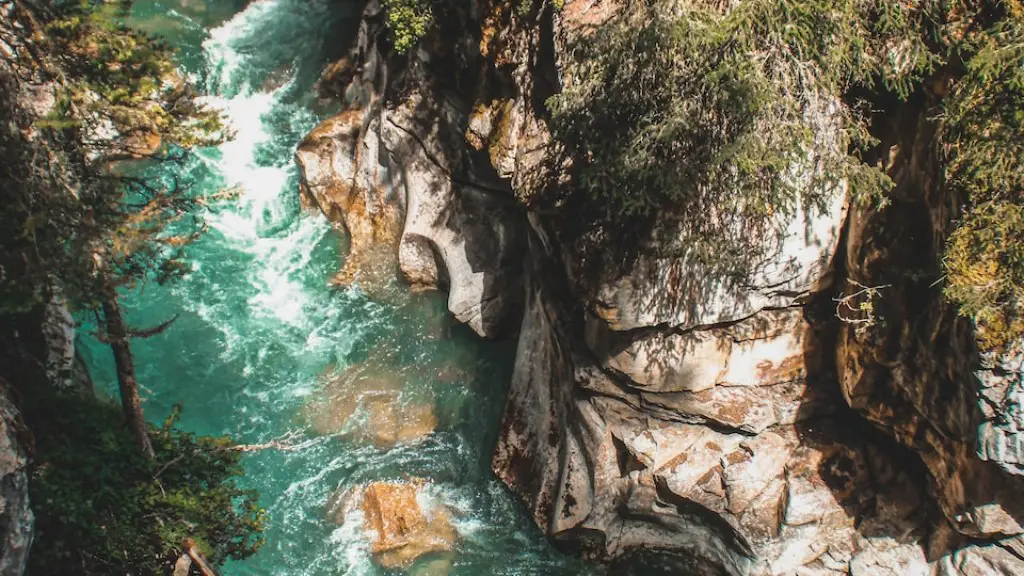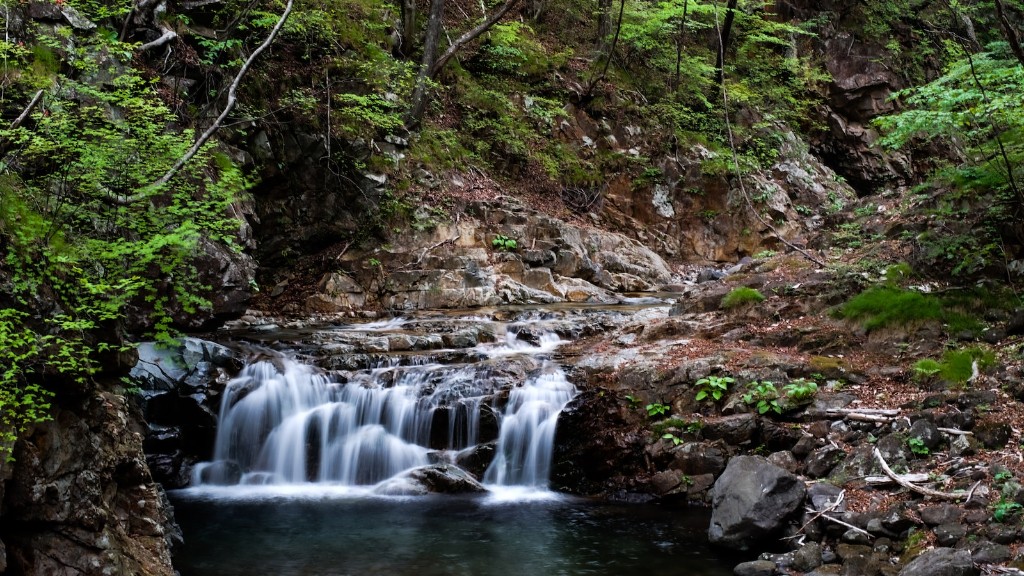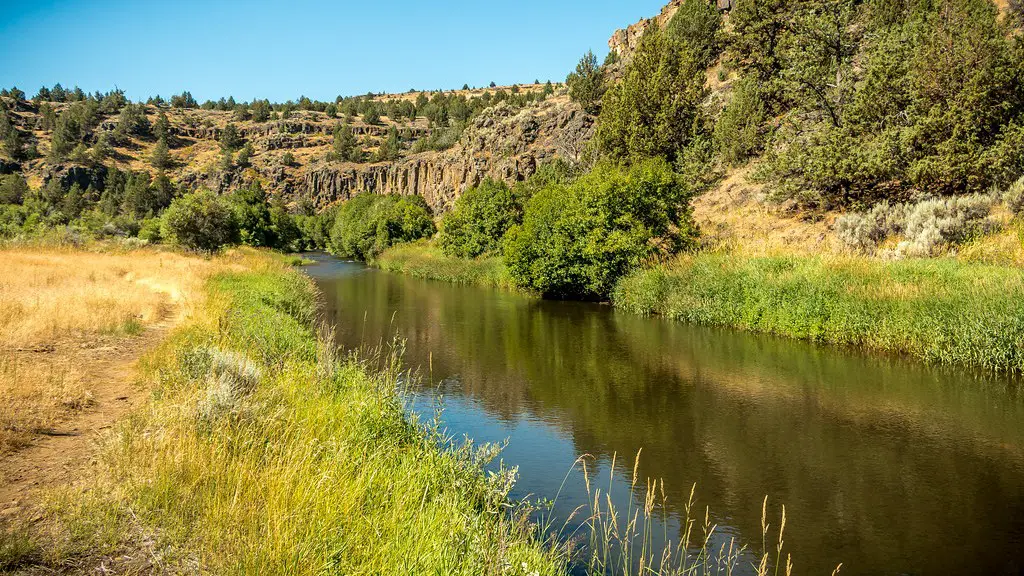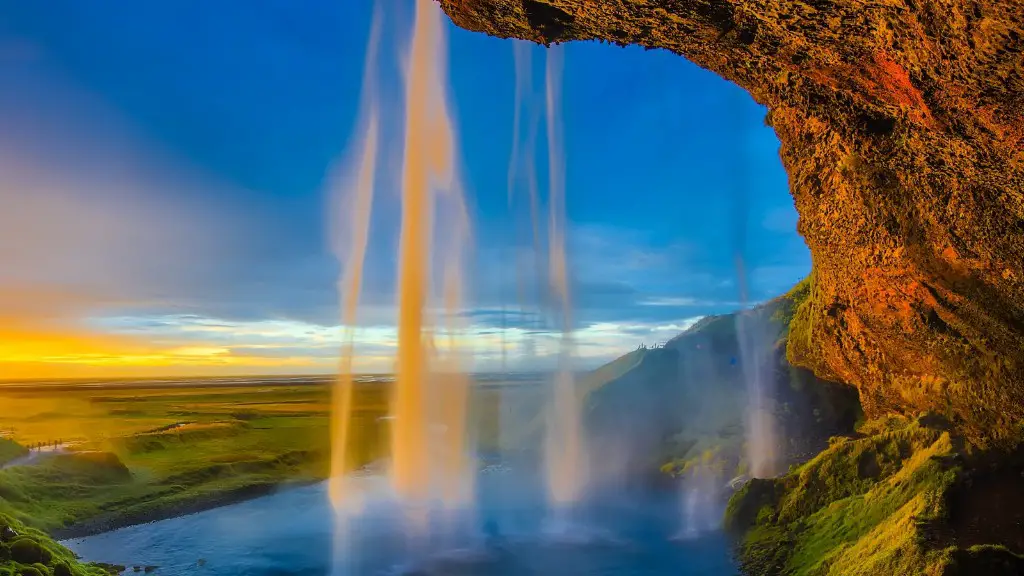The Nile River is the longest river in the world and holds the distinction of being the longest river in Africa. It starts in the south of Sudan, on the White Nile, flows northward throughout Africa, and empties into the Mediterranean Sea in northern Egypt. The Nile River is approximately 4,258 miles (6,853 kilometers) long and is made up of several major rivers, including the Blue Nile, White Nile, and Atbara.
The Nile River is a vital source of water, transportation and sustenance for the people who live along its banks. Ancient civilizations, such as the Egyptians, utilized the Nile as a source of food and a vital waterway for goods traded from and to other countries. During the wet season, the river overflows its banks, providing nutrients and goods for population centers for 250 miles or more on either side of the river.
The Nile River is divided into two sections. The White Nile is the main source of about 85 percent of the water that flows into the Nile River, while the Blue Nile contributes the remaining 15 percent of the water. The White Nile is considered the “true” Nile from a geographical point of view, and starts in the Great Lakes region of central Africa. The Blue Nile begins as a trickle of water at Lake Tana, located in northern Ethiopia.
The Nile River has a long and rich history. The river is believed to have been used by ancient Egyptians as early as the third millennium BCE. Historians also believe that the civilizations along the river were among the first to adopt a settled lifestyle which eventually led to the invention of agriculture. The Egyptians built an elaborate irrigation system in the region around the Nile which allowed them to cultivate enormous tracts of land and has left an indelible mark on the region’s culture. In the modern era, the river has been used as a source of hydroelectric power, and in countries such as Sudan and Egypt, the Nile is an important source of income for farmers, fishermen and other river-related businesses.
History
The Nile River is one of the oldest rivers in the world and is believed to have been used by early human settlers more than 8,000 years ago. Historians believe that the river was likely used by primitive hunter-gatherers who followed the melting ice of the glaciers in search of food. It is also believed that the region was the first place where humans adopted a settled lifestyle and started planting crops, leading to the invention of agriculture, which eventually spread across the world.
The Nile is also credited for shaping a large part of the history of Ancient Egypt. The river served as a source of food and a vital waterway for goods traded from and to other countries. The river was also the scene of major battles during the Pharaohs’ conquests of foreign lands. The Egyptians built an elaborate irrigation system around the Nile which allowed them to cultivate huge tracts of land and helped shape their civilization.
The importance of the river to the development of Egypt and its civilization cannot be underestimated. Ancient Egyptian civilization was built on the use of the river, and throughout its long history, the Nile has provided a major source of water, food, transportation, and sustenance to the people in the region.
Impact on Society
The Nile River has had an immense impact on the societies that have lived within its reach. Hundreds of millions of people living in the Nile basin have relied on the river for their livelihoods. The river’s fertile soil has allowed for the growth of numerous crops, and has enabled thousands of farmers to produce food for their families. The river has been used for trade and transport of goods, and has provided a vital source of income for fishermen and other river-related businesses.
In some parts of the river, flooding can add essential nutrients and minerals to the soil, leading to higher crop yields and more productive land in areas along its banks. The nutrient-rich soil and the abundance of water has helped to shape the diverse and unique cultures of the region and enabled trade and communication throughout the river’s length and during most of human history.
In more recent times, the Nile River has been used as a source of hydroelectric power, and has been harnessed for electricity in its northern reaches. The international impact of hydroelectric energy from the river has allowed countries such as Ethiopia, Egypt and Sudan to create vast energy networks and promote economic growth in their regions.
Environmental Impact
The Nile River is one of the most important rivers in the world, but it is not without its challenges. The region is subject to natural disasters, such as earthquakes and floods, which can cause extensive damage and put the river’s fragile ecosystem at risk. The Nile River also suffers from a great deal of water pollution, as well as soil erosion caused by wastewater and industrial pollution.
Environmental groups have become increasingly concerned with the impacts of damming projects, which can disrupt the natural cycle of the river, as well as its wildlife. The construction of numerous dams along the river have reduced the flow of water, leading to issues such as siltation and decreased levels of oxygen in the water.
The effects of climate change have also had a negative effect on the health of the river. Higher temperatures and changes in rainfall patterns have caused the river’s water levels to rise and fall unpredictably, which can have serious repercussions for farmers and other inhabitants of the region.
Efforts Towards Conservation
In recent years, several governments along the Nile River have increased their efforts to protect the river and its fragile ecosystem. Many countries in the region have implemented stricter laws and regulations to control pollution and protect the river’s delicate balance of species.
Environmental groups have also been making strides towards conservation with initiatives such as clean-up efforts and awareness campaigns. In 2017, the United Nations launched an initiative called the Nurture the Nile Campaign, which aims to protect the river, improve water quality and empower local communities to take ownership of their water resources.
The efforts made to conserve and protect the Nile River are essential for its future. The health of the river is vital for the economic, social, and ecological well-being of the millions of people who call the area along its banks home, and conserving its resources will help ensure the wellbeing of the region for generations to come.
Impact on International Relations
The Nile River is a vital resource to the people and countries of the region, and this has led to a number of international disputes over the use of its resources. Water sharing agreements and other treaties have been put in place to ensure that the river’s water is allocated and used responsibly and equally between different countries. However, tensions can still arise between countries that share the river and this has led to a number of political disputes over the years.
The Nile is also an important economic resource for the region, and this has led to the development of numerous hydroelectric power plants, irrigation systems, and transportation networks. These developments have helped to boost the local economies and create jobs in the nations that share the river.
The complex network of treaties and agreements between the countries of the region has been an integral part of international relations for centuries, and has been largely successful in helping to maintain peace. The river has also provided a platform for dialogues between different nations which has helped to foster diplomatic relationships.
Conclusion
The Nile River is one of the world’s greatest rivers and has played an integral role in the development of the region and its people. The river has provided sustenance and resources for hundreds of millions of people, and its importance to the region cannot be overstated. The river has been a source of political tensions, but with the roles of international organizations and treaties, the countries that share the Nile have been largely successful in managing their shared resources and maintaining peace. Conservation efforts and increased awareness of the river’s importance have been instrumental in safeguarding its future.





